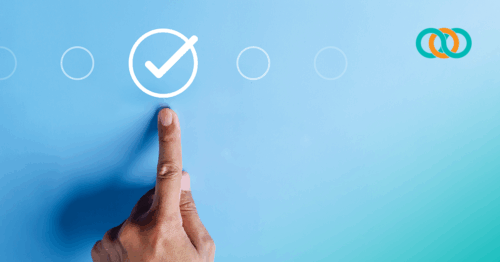Introduction
When organizations bring in a learning and development consultant, they want to know they’ve hired the right expert. And consultants often feel the urge to prove their value right away; by sharing credentials, highlighting ROI, or offering a fast solution.
But here’s the truth: the first meeting isn’t about the consultant. It’s about the client.
The first call with a client isn’t about showcasing everything a consultant knows. It’s about uncovering what makes the client’s situation unique.
Why Listening Builds More Trust Than Solutions
Imagine opening up to a friend about something weighing heavily on your mind. Instead of listening, they interrupt with a quick fix that doesn’t quite fit. You walk away feeling unseen.
The same thing happens in business conversations. When a consultant rushes into solutions, they risk overlooking what makes the client’s situation unique. Real trust isn’t built on quick fixes. It’s built on thoughtful questions, careful listening, and reflecting back what you’ve heard.
For a learning and development consultant, the first task isn’t to provide all the answers. It’s to ask the right questions.
That may feel counterintuitive. After all, consultants are often hired for their expertise in instructional design or corporate training solutions. But curiosity is the true superpower.
Inside organizations, tough questions often go unasked. Employees may hold back to avoid stepping on toes, challenging tradition, or revealing gaps in knowledge. An external instructional design consultant carries none of that baggage. They have permission to probe, to dig deeper, and to surface the issues others hesitate to raise.
At TrainingPros, we see this dynamic every day. Our most effective learning and development consultants don’t stand out because of quick answers. They succeed because they lead with genuine curiosity. That curiosity not only uncovers root challenges but also ensures the training solutions we deliver are aligned, practical, and impactful.
Download Your Copy of Do You Need an Instructional Design Consultant?
Uncovering Confusion through Curiosity
Several years ago, I consulted with the HR division of a large financial institution during a process overhaul. Every department thought they knew how the process worked but their answers didn’t line up.
Instead of pushing forward, I asked clarifying questions:
- “Who owns this step?”
- “How does this handoff work?”
- “What happens if it doesn’t?”
The responses revealed major misalignments. Because I was an outsider, stakeholders didn’t feel defensive. They openly explained their perspectives. When they corrected me, they also corrected each other.
Later, I mapped their answers into a process flow. In the next session, that flowchart sparked healthy debate, clarified accountability, and gave everyone shared ownership. It became the foundation of the training program and the catalyst for alignment.
The lesson? Strategic questions don’t just shape better training. They bring clarity and alignment across teams.
Why Insiders Can’t Always Ask
Employees often avoid tough questions because of:
- Politics and power dynamics. Asking “Why do we do it this way?” can feel like second-guessing leadership.
- Teams assume nothing will change because they’ve “seen it all before.”
- People worry about looking uninformed or resistant.
A learning and development consultant brings neutrality. You’re not tied to internal politics or past baggage. That gives you permission to probe deeper, uncover hidden issues, and guide conversations others can’t.
The Art of Curious Questioning
Curiosity is powerful, but it has to be intentional. The best learning and development consultants ask with curiosity, not judgment.
Here are six principles that I follow:
1. Frame curiosity as value.
Your questions should clearly serve the client’s goals.
“To make sure this training reflects your real processes, can I ask…”
2. Skip “why.”
“Why” can feel critical or defensive. Reframe neutrally.
“What happens when this step doesn’t go as planned?”
3. Seek multiple perspectives.
Different roles see the process differently. Surface those views.
“How would this look from a manager’s view? From an employee’s view?”
4. Summarize to confirm.
Reflect back what you’ve heard to check alignment.
“So, Division A sees X, while Division B sees Y. Did I capture that?”
5. Ask open-ended questions.
“What” and “how” questions uncover deeper insights than yes/no.
“What challenges come up when onboarding new employees?”
6. Be patient.
Silence often means someone is thinking. Resist the urge to fill the space.
(Pause before speaking again.)
Questions that Unlock Clarity
Some of the best consulting questions are deceptively simple. Here are some categories that consistently reveal insights:
Origin
These questions help uncover whether the need comes from a real performance gap or a perceived issue. Sometimes the request is for training when the real fix might be process improvement or change management.
- “What prompted the need for this training right now?”
- “What business problem are you hoping this program will solve?”
- “Has this challenge come up before, and how was it addressed then?”
- “If nothing changes, what’s at risk for the business or employees?”
Ownership
Clear role clarity and accountability reduce confusion and duplication of effort. These questions can highlight whether learning and development is expected to lead the effort or simply support it.
- “Who is responsible for driving this initiative?”
- “Which teams or leaders are most directly impacted?”
Measurement
Without a measurable outcome (whether KPIs, business metrics, or learning analytics), programs risk being seen as cost centers instead of strategic enablers. These questions tie directly into training ROI and performance improvement.
- “How will you know this program is successful?”
- “What outcomes matter most to leadership; behavior change, performance, or something else?”
- “Are there KPIs or metrics already being tracked that this training should influence?”
- “What short-term and long-term results would you like to see?”
Perspective
Looking at the experience through different lenses strengthens employee onboarding and customer experience. It also helps ensure learning journeys are designed for relevance and clarity.
- “How will this program affect a new hire versus a seasoned employee?”
- “What do managers need to see or hear for this to be useful?”
- “What will success look like from the employee’s perspective?”
- “How might customers experience the impact of this training?”
Support
Sometimes, the right job aids, knowledge management systems, or learning technologies are already in place, but underutilized. These questions prevent duplication and ensure blended learning is truly integrated.
- “What tools, systems, or resources already exist to support this?”
- “Are there current job aids, playbooks, or eLearning that cover part of this?”
- “What informal methods are people using today to get this done?”
- “What technology do you already rely on that we should integrate with?”
Alignment
Training only succeeds if there’s stakeholder alignment. Misalignment often shows up as inconsistent messaging, competing priorities, or gaps between leadership expectations and frontline realities.
- “Do all stakeholders agree on the main goal of this training?”
- “Where have you seen differences in expectations between leadership and frontline employees?”
- “Who else should be included in the decision-making process?”
- “Are there competing priorities that could affect this initiative?”
Notice how each question ties back to clarity, accountability, or outcomes: the same anchors that make instructional design and talent development effective.
Why clients appreciate these questions
When you ask the questions others won’t; something powerful happens:
- Surface hidden misalignments
- Build consensus faster
- Save time and rework
- Establish credibility as a partner, not just a vendor
Clients don’t just want answers. They want to feel heard. A learning & development consultant who listens and reflects earns trust faster than one who pushes prepackaged solutions.
That’s why curiosity isn’t just a skill. It’s how consultants guide clients to clarity and alignment.
Practical Tips for Your Next Client Engagement
Here’s how to put this into practice immediately.
- Prepare 10–15 open-ended questions before intake.
- Position yourself as a partner, not an auditor.
- Summarize insights in a one-page “What We Learned” brief.
- Align solutions with the business metrics your client values.
Remember, a learning and development consultant’s edge comes in asking the right questions that lead to clarity, alignment, and impact.
How TrainingPros Can Help
If your team is exploring the outsourcing of contract consultations for coaching, feedback, or custom learning solutions, TrainingPros can connect you with experienced instructional design consultants, eLearning developers, and corporate training consultants who know how to balance innovation with human judgment.
At TrainingPros, we match organizations with experienced consultants who lead with strategy, then help you identify the tools and methods that actually support your business goals. Whether you’re rethinking onboarding, scaling leadership development, or trying to make sense of your tech stack, we can help you shift from reactive to results-driven.
We’ve been named a Top 20 Staffing Company by Training Industry, a Smartchoice® Preferred Provider by Brandon Hall Group, and a Champion of Learning by ATD–honors that reflect our commitment to providing top-tier, problem-solving talent.
When you have more projects than people™, let TrainingPros connect you with the right consultant to help you cut through the noise and focus on what matters most.
- 1share
- LinkedIn0
- Twitter0
- Facebook0
- Love This1











